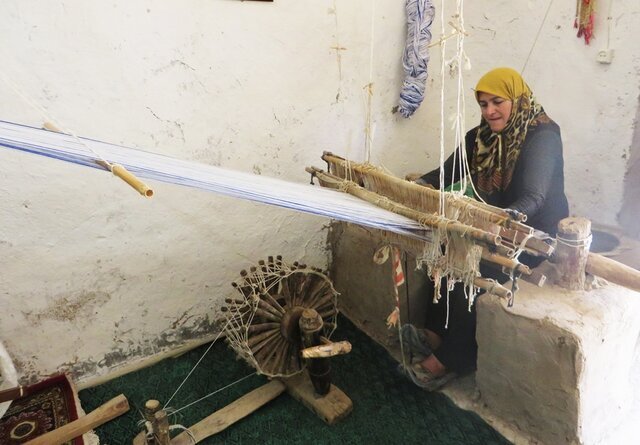Women revive West Azarbaijan’s handicrafts

TEHRAN - Morteza Safari, who presides over the tourism directorate of West Azarbaijan province, highlighted a significant trend, stating that over 60% of the workforce in the province's handicraft industries comprises women.
Estimates suggest up to 45,000 individuals are engaged in the field of handicrafts across the province, with more than 60% being women, Safari said.
The official explained that the nature of most handicrafts aligns well with the physical and spiritual nature of women, contributing to their substantial representation in this sector.
Emphasizing women’s entrepreneurial role, he cited an example of a female entrepreneur in the carpet weaving industry in a Mianeh village who has generated employment for 70 individuals.
Regarding financial support, Safari noted that a total fund of 1 trillion rials (some $2 million) was distributed among the crafters, of which approximately 60 billion tomans were received by craftswomen.
While acknowledging the challenges faced by the handicraft industry, the official pinpointed the primary issues of low profit margins and market accessibility.
“Efforts are underway at both the national and provincial levels to overcome these challenges, including initiatives to expand permanent marketplaces and provide free stalls for artists,” according to Safari.
Moreover, he highlighted specific handicrafts in which women artisans excel such as carpet weaving, glasswork, woodworking, and pottery.
The statistics bring to light that women in West Azarbaijan are not only preserving cultural traditions but also pioneering in the vibrant and diverse world of handicrafts.
As the province continues to address market-related challenges, the empowerment of women in the handicraft sector stands as a testament to their resilience, creativity, and indispensable role in shaping the cultural and economic context of West Azarbaijan.
Currently, a total of 13 cities and three villages in Iran have been registered by the World Council of Handicrafts as “world cities of handicrafts”. Based on available data, the handicraft sector of the country has generated jobs for more than 2.5 million people, of which some 1.5 million are registered in government databases and around 0.5 million are licensed workers.
From exquisite carpets to subtle miniature paintings, and from turquoise inlaid objects to floral pottery, each one hints at skills passed down from generation to generation. The majority of skilled Iranian artisans use raw materials like wood, bones, silk, wool, copper, silver, gold, and gemstones to create exquisite handicrafts. They perform a miracle by infusing their sentiments and cultural ideas into these traditional handicrafts. Because of this, Persian artwork is incomparably valuable compared to many other works of art from around the world.
Leave a Comment